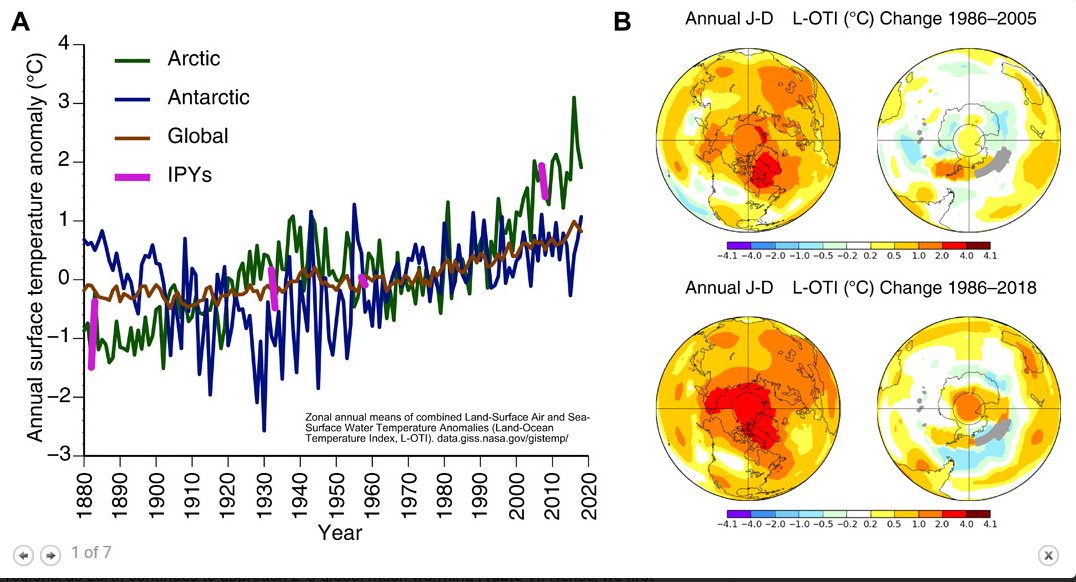The polar regions in a 2°C warmer world
New publication by Eric Post, Richard B. Alley, Torben R. Christensen, Marc Macias-Fauria, Bruce C. Forbes, Michael N. Gooseff, Amy Iler, Jeffrey T. Kerby, Kristin L. Laidre, Michael E. Mann, Johan Olofsson, Julienne C. Stroeve, Fran Ulmer, Ross A. Virginia and Muyin Wang

Abstract:
Over the past decade, the Arctic has warmed by 0.75°C, far outpacing the global average, while Antarctic temperatures have remained comparatively stable. As Earth approaches 2°C warming, the Arctic and Antarctic may reach 4°C and 2°C mean annual warming, and 7°C and 3°C winter warming, respectively. Expected consequences of increased Arctic warming include ongoing loss of land and sea ice, threats to wildlife and traditional human livelihoods, increased methane emissions, and extreme weather at lower latitudes. With low biodiversity, Antarctic ecosystems may be vulnerable to state shifts and species invasions. Land ice loss in both regions will contribute substantially to global sea level rise, with up to 3 m rise possible if certain thresholds are crossed. Mitigation efforts can slow or reduce warming, but without them northern high latitude warming may accelerate in the next two to four decades. International cooperation will be crucial to foreseeing and adapting to expected changes.
